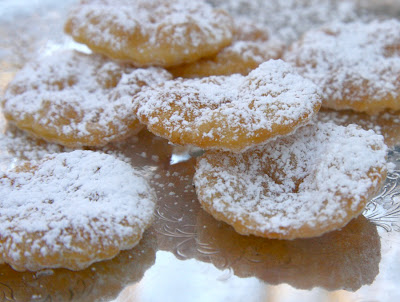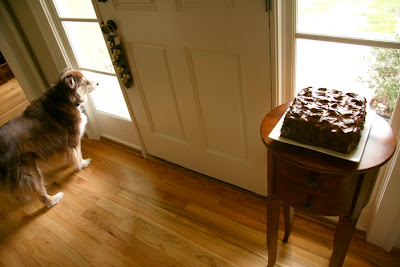
Radishes and butter are a classic French combination, but I didn't know this until last summer when I saw a post for Radish Herb Butter on the blog Apple Pie, Patis, and Pate. The pairing of radishes with butter struck me as unlikely and yet quite appealing. We have a steady radish supply nearly year round, thanks to our farm box, so although I was eager to make the butter, I bided my time until it was my turn to host book group (we usually have cheese, bread/crackers, fruit, and of course, dessert). I ended up preparing this in November, and now that the holidays are over I finally get to share it.
n.o.e.'s notes:
- You can find the recipe at the end of this post.
- Making this "dish" is as easy as softening some butter, beating it with lemon juice, then stirring in some chopped herbs and julienned radishes. Season to taste, and voila! There you have it.
- It was a little tricky to work the lemon juice into the butter, but persistence paid off (as it often does!)
- I used radishes from the farm box that are kind of reverse of regular radishes: red on inside, white outside
- I served the butter with Dan Lepard's Buttermilk Baps (rolls) - read my baps post here.
the verdict:
The radish herb butter proved to be quite popular with those who tried it at book group. I expected it to be crunchy, with a fresh and sharp radish taste, with the butter serving mainly as a binder. Instead the tastes of the radish, the butter and the herbs mingled and combined to produce a flavor that was mellow and warm, savory and rich. The spread was complemented nicely by the soft buttermilk rolls, but would be equally good with thin crackers. Or, of course, French bread rounds!
the recipe:
Radish Herb Butter
recipe adapted from Green City Market
and adapted from Apple Pie, Patis, and Pate
1 stick (8 ounces) unsalted butter, at room temperature
juice of 1/2 lemon
salt and freshly ground black pepper, to taste
2 tablespoons fresh chives, chopped
2 tablespoons fresh parsley, chopped
5 radishes, approximately, about 1 inch in diameter, washed and trimmed
- Cut the radishes into thin strips.
- In a bowl, beat the butter with a wooden spoon until smooth.
- Beat in the lemon juice and season with salt and pepper to taste. Mix in the chopped herbs .
- Stir in the radishes.























